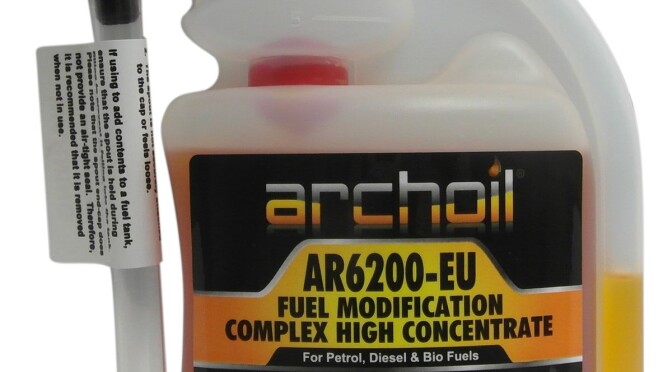We regularly receive questions regarding fuel catalyst technologies and how they work. In particular, we receive many questions about Archoil AR6900-D and AR6900-P MAX. The existing definition of “burn rate modifier” and the phrase “lowers burn rate by up to 400 degrees” has caused confusion.
In simple terms, a catalyst facilitates a better fuel burn. Each fuel type will have a flash point and auto-ignition point, which are determined by temperature and other factors. However, these are different from the burn rate.
Both petrol and diesel are composed of carbons, and these carbons, or carbon chains, require up to 1200ºF to burn thoroughly. This has nothing to do with the flash point. The flash point is the temperature at which the fuel vapor will ignite with the help of an ignition source. The auto-ignition point is the temperature at which the fuel vapor will ignite without an ignition source.
Once the fuel has ignited, it creates an exothermic reaction (heat). This rapid increase in heat burns the fuel (carbons) and establishes the explosion in the combustion chamber, thus resulting in a massive release of energy. This forces the piston downwards and causes the crankshaft to rotate.
If you can reduce the temperature at which carbons burn, say by up to 400ºF in the case of AR6900, you can improve the burn. This is achieved by increasing the surface area of fuel droplets and starting the burn rate of hydrocarbons at a lower temperature to yield more available BTUs from the combustion process. The fuel becomes more aromatic (a sign of increased chemical stability), and a longer residual burn occurs. This reduces unburned hydrocarbons and wasted energy in the form of black smoke or emissions.
Altering the burn rate in this way does not directly increase horsepower. It increases the energy released through the explosion, which raises torque output. Burning the fuel more fully will also increase torque and lower emissions, as proven by a carbon mass balance test. This is the same process with all hydrocarbon fuels such as petrol, diesel, ethanol, heating oil, heavy fuel oil, etc.
Now, you might wonder, will AR6900-P affect petrol’s octane rating? Yes, but only marginally. The catalyst amount is significantly lower than in octane booster products.
AR6900-D and AR6900-P only affect the temperature at which the carbons will burn once the fuel has ignited. It does not directly alter the flash or auto-ignition point. However, tests have shown that improving combustion quality and stability means that the propensity of pre-ignition is reduced with AR690-P. And this can have the effect of “raising” the octane.
When fuel is not entirely burned, pockets of fuel can subsequently ignite a second time, again causing engine knock. The improvement in combustion quality from using AR6900-P helps eliminate this because fuel carbons are burned more thoroughly the first time. AR6900-P does not alter the fuel’s auto-ignition point but instead corrects another inherent source of engine knock—remaining unburned fuel.
We hope this helps and if you require any advice, please don’t hesitate to contact us.




 categories
categories